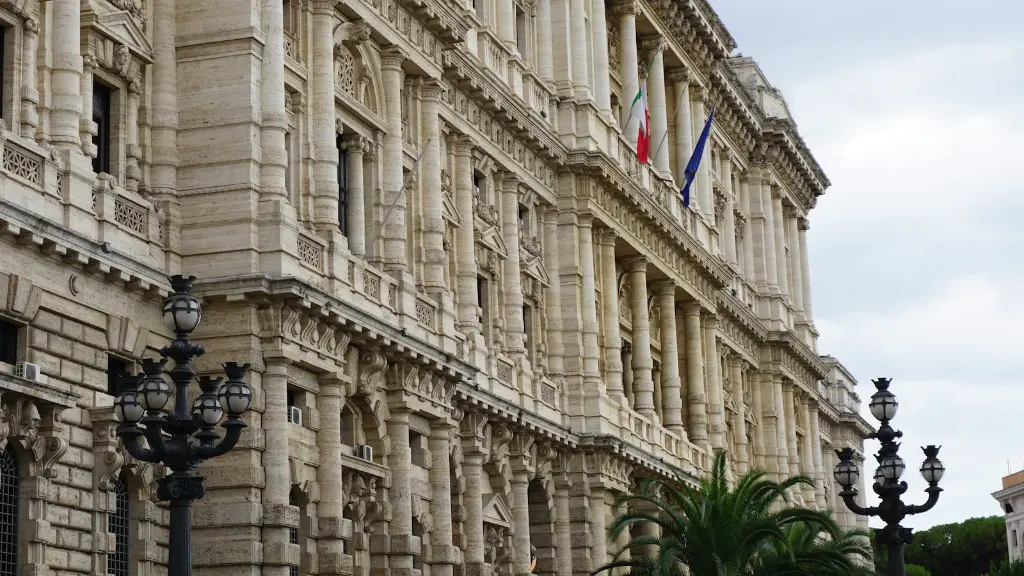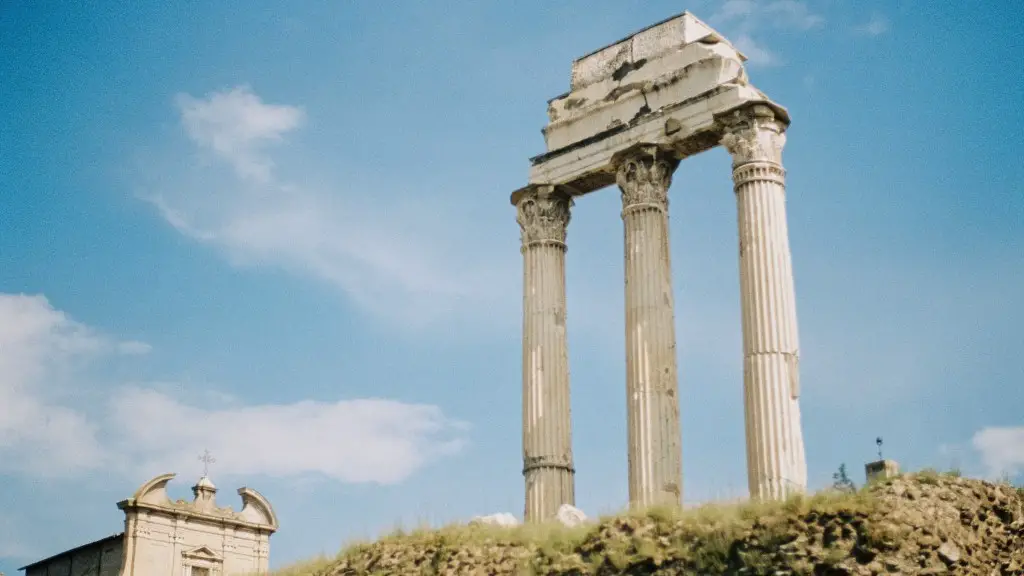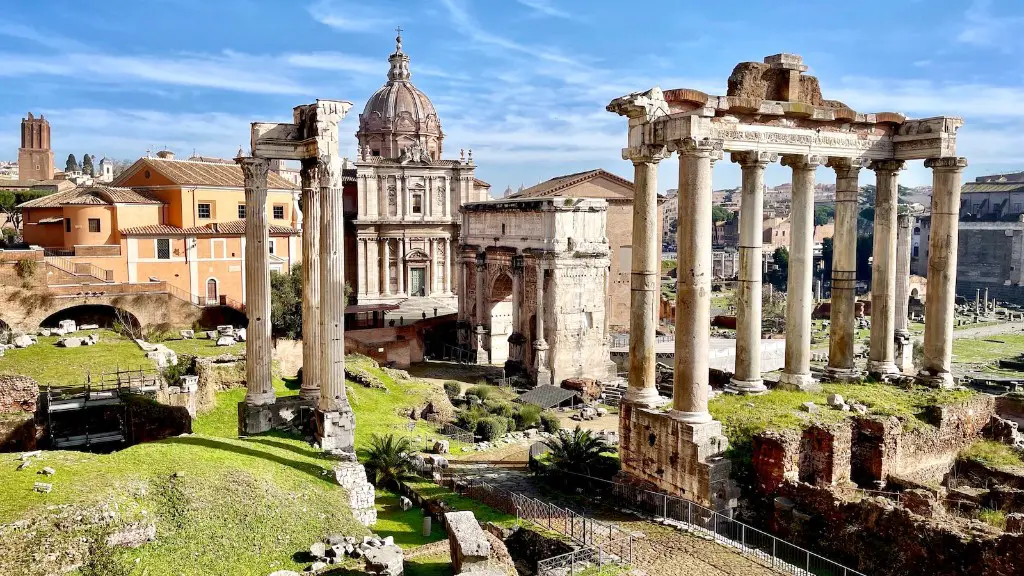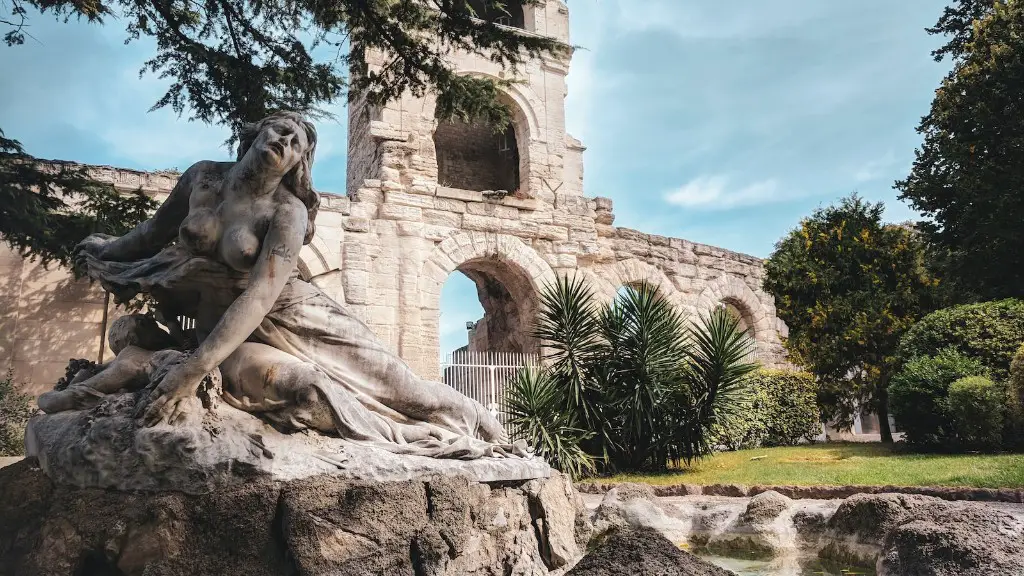Patricians in Ancient Rome were the most influential and powerful members of the Roman aristocracy. They played an invaluable role in the governance and social structure of the Roman Empire and in the development of its culture and economy.
The patricians, also known as the patres, were the group of elite Roman families, part of the senatorial class, who held high governmental and religious offices. They had the privilege of being able to hold the highest governmental offices and to enter the priesthood, and were regarded as the upper echelon of Roman society. The patricians were the only group of people permitted to attend the Roman Senate and to hold the highest offices in the Republic.
The origin of the patricians dates back to the formation of the Roman Republic and the aristocratic nature of the society during this time. The concept of patres (fathers), or patricians, can be traced to the Latin word patres, meaning “fathers” or “fatherly”. The patres were originally the leaders of the curiae, the early Roman political units. Over time, the term was extended to designate the leading citizens and the upper class of Roman society.
The patricians had several important roles in Ancient Rome. As one of the ruling classes, they had the exclusive right to vote and to hold public office. They were also responsible for the administration of justice, appointing magistrates and judges to handle court cases. Additionally, they played a vital role in the economy, acting as landowners, merchants, bankers and wealthy financiers. Patricians were also known to serve as priests, which allowed them to maintain their social power and influence through religious authority.
Patricians had a reputation for being highly conservative and traditionalist. They believed in the importance of the political and social hierarchies that had been established in Rome since its founding and were opposed to any kind of social or political change. This made them unpopular with many of their fellow Romans, who saw their traditionalism and conservatism as outdated and unfair.
The patricians also had a tendency to be extremely loyal to the Senate and to Roman law, and had a strong sense of civic duty. They were dedicated to preserving the Republic and had great influence over the law-making process and the appointment of magistrates and prosecutors. This meant that the interests of the Senate and the patricians often held precedence over those of the people.
Despite their power and influence, the patrician class was in decline by the 1st century BCE, as the Republic was replaced by the Roman Empire. Although they retained some of their privileges and powers, they were no longer the sole holders of political and religious authority. Nevertheless, their role in the Roman Republic remained an important one and their legacy can still be seen today.
The Social Status of Patricians
The patrician family was the apex of social status in Rome. Being born into a patrician family granted the individual membership to the senatorial class and access to its privileges and benefits. Patricians were seen as the leading citizens of Rome and this was reflected in their daily lives. They lived in luxurious dwellings and may have enjoyed access to villas and country estates. Patricians had a range of leisure activities available to them, such as chariot racing, theatre and music. They also had the advantage of being well-educated and literate, which was rare among other classes in Ancient Rome.
The patricians took their social status seriously and were dedicated to ensuring that their families remained at the top of society. To this end, they had elaborate marriage and inheritance laws that were designed to strengthen their social and political power. Marriage within the patrician class was encouraged and it was seen as a status symbol. Patricians often arranged marriages to strengthen political alliances or tie families closer together. In addition, women of patrician families often had a higher status than their counterparts from other social classes, although they did not usually have the same legal rights.
Patrician family names were also closely guarded and inheritance was strictly regulated. This ensured that only those of the patrician class could remain in power. As well as marriage and inheritance laws, the patricians also made sure that other members of the senate belonged to their own class by imposing restrictions on who could and could not vote.
The patricians were an influential and powerful group in Ancient Rome and their legacy can still be seen today. They held the highest governmental offices, held vast amounts of political and religious power and were the driving force behind many of Rome’s laws and policies. As a result, patricians were seen as the highest social class and enjoyed the many privileges that this status afforded them.
The Decline of Patrician Power
The patricians had a strong sense of loyalty and dedication to the Roman Republic which meant that their power and influence was difficult to challenge. However, as the Republic transitioned into the Roman Empire, their powerful position began to be slowly eroded. With the advent of the Empire came the rise of a new class, the equites or knights, who had the loyalty of the newly acquired provinces. This meant that the equites had more power, wealth and influence than the patricians, which ultimately led to their decline.
The imperator, or emperor, also contributed to the dwindling power of the patricians. With the emperor, the power of the senatorial class was diminished and the scope of the laws was significantly restricted. This meant that the patricians lost their ability to shape the laws in their favour and their power was further weakened.
The effects of the Emperor were compounded by the breakdown of the traditional family structure in Rome. As wealthy patrician families became less important, their lands and wealth was divided among their offspring until most patrician families had spread and diluted their power. As a result, the power of the patricians diminished even further.
Despite this, the patricians still retained much of their influence and power in Ancient Rome. They were considered the ruling class for many centuries and their legacy can still be seen today in the culture and politics of modern Rome. The reputation of the patricians, however, was tarnished as their power began to diminish and they are now seen as a relic of the past.
The Influence of Patricians in Modern Rome
Although the patrician class is no longer the major force that it once was, many of the values and principles that the patricians stood for are still alive in modern Rome. The patricians’ sense of loyalty and dedication to their country is still evident in many aspects of modern-day Roman culture. Many of the traditions, laws and ideas that formed the basis of Roman society can still be seen in the country today.
Patricians also influenced modern Rome in terms of architecture. Many of the buildings and monuments in Rome have been built using the same methods that were employed by the patricians. Some of the most famous architectural feats in Rome such as the Pantheon and Arch of Titus were all constructed by members of the patrician class. These buildings still stand today and are a testament to the power and influence of the patricians.
The patricians of Ancient Rome were an important part of the society, politics and economy of the Roman Empire. They held tremendous power and influence and were respected for their loyalty and dedication to the Republic. Despite the dissolution of the Republic, the legacy of the patricians can still be seen today in modern Rome.
Patricians and Religion
The patricians had a strong hold on religious affairs in Ancient Rome. As the ruling class, the patricians had the exclusive right to be priests and participate in the state-sanctioned religious ceremonies and festivals. This gave them significant power and influence over Roman religious life and practices. The most famous example of patrician religious influence was through their control of the Vestal Virgins. The Vestal Virgins were priestesses who were responsible for tending the eternal flame of Vesta, the goddess of the hearth, home, and family in Ancient Rome. They were under the careful watch of the patrician families who made sure that the Vestal Virgins followed the rules set forth by Roman law and the Senate.
The patricians also played an important role in the Temple of Jupiter Optimus Maximus. This was the most important temple of the Roman state, and the patricians had the privilege of entering the temple and performing its rituals. This allowed them to remain connected to the gods and also enabled them to maintain their power and influence over religious life in Rome.
The patricians’ influence in religious life did not just stop at Rome. They also had influence over other parts of the ancient world, such as Greece and Egypt. Through trade and travel, the patricians spread their beliefs and ideas to other parts of the world, creating an intricate web of cultural and religious exchange.
The patricians’ influence over religious affairs in Ancient Rome was significant and their legacy can still be seen today. Many of their beliefs and practices can be found in modern-day worship, and their influence in other parts of the world is still evident.
Patricans and their Legacy
The patrician class played an indispensable role in the history of Ancient Rome. Their strong sense of loyalty and dedication to the Republic, as well as their influence over religious, political and economic affairs, made them a powerful force in the Roman Empire. Although the patricians were no longer the ruling class after the fall of the Roman Republic, their legacy can still be seen today in many aspects of modern Rome. The values, ideas and principles that they espoused still form the basis of many of Rome’s most important laws and policies.
The legacy of the patricians can also be seen in the architecture and monuments of Rome, as many of the buildings and monuments were constructed by patricians or according to their design. Additionally, the patricians’ influence on religion, culture and politics can be seen in other parts of the world, as their ideas and beliefs spread across the ancient world.
The patrician class of Ancient Rome was an integral part of the Roman Empire, and their legacy can still be seen today. They were an influential and powerful group who held the highest governmental offices, held tremendous amounts of political and religious power and were the driving force behind many of Rome’s laws and policies. Despite their decline, the legacy of the patricians still lives on in modern Rome.





